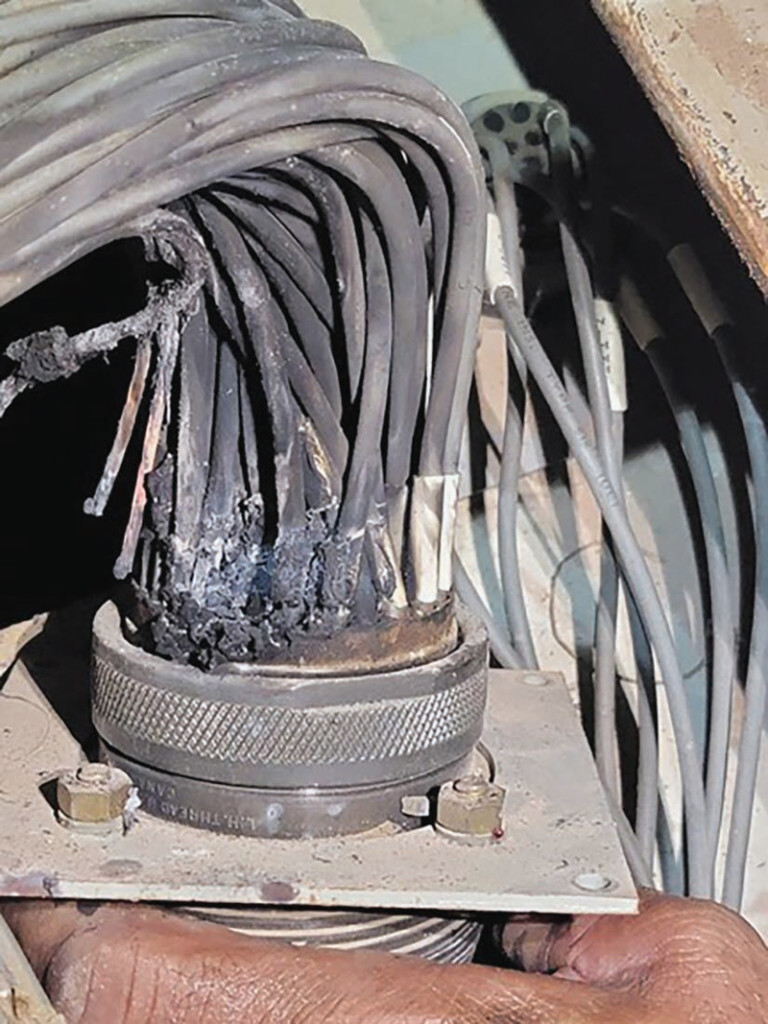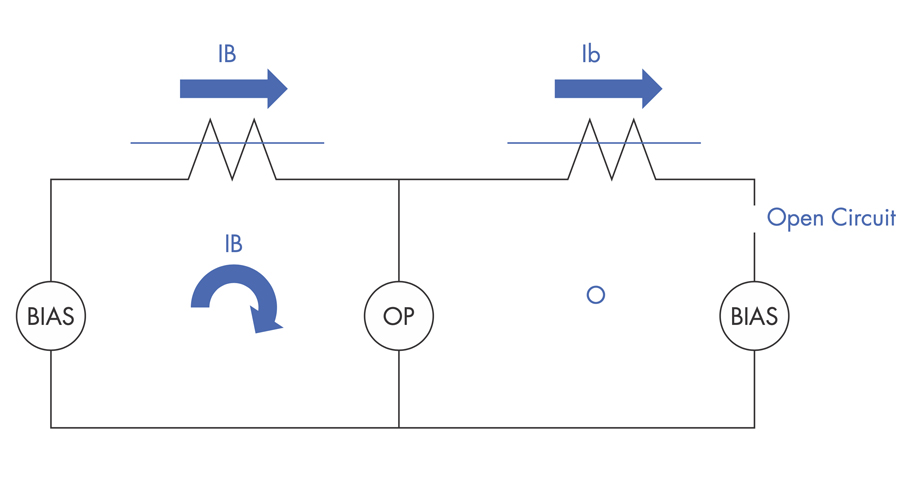The overall differential protection for a generator step-up transformer (GSU) began to trip when the generator was synced to the plant switchyard. Figure 1 shows the one-line diagram for the overall differential protection.

There is one set of current transformers (CTs) on the high side of the GSU, one set of CTs on the low side of the GSU not including the generator, and one set of CTs on the high side of the auxiliary transformer.
FIELD INVESTIGATION
Field inspection of the CT wiring revealed that A-phase and C-phase CTs on the low side of the GSU were rolled. Engineering initially requested that the wiring be changed to eliminate rolling the CTs. However, inspection of the low-side bus revealed that A-phase and C-phase were also rolled. Further field inspection revealed that the B-phase wire running from the set of CTs on the low side of the GSU had failed as a high impedance (Figure 2).

Review of Figure 2 reveals that some of the CT wiring had corroded, which was the cause of the high impedance presented to the differential relay. The bad wires were replaced, which eliminated the problem.
CIRCUIT ANALYSIS
Figure 3 illustrates why the differential protection would operate due to the high- impedance wiring.

Assume that the impedance is high enough on the secondary side (Ib) that we can consider it an open circuit. Normally, the operate coil sees no differential current during load flow:
IOP = IB – Ib = 0
However, due to the open circuit, there is no current on the secondary side, so there is a differential current:
IOP = IB – 0 = IB
CONCLUSION
The overall differential protection for a GSU began to trip when the generator was synced to the plant switchyard. It was first thought that the trips were due to incorrect wiring for the CTs, but if this had been the case, it should have tripped the first time the protection was put into service. Further investigation revealed that the trips were because the B-phase wire running from the set of CTs on the low side of the GSU had failed as a high impedance. The bad wiring was replaced, and the differential protection stopped misoperating.

Steve Turner is in charge of system protection for the Fossil Generation Department at Arizona Public Service Company in Phoenix. Steve worked as a consultant for two years, and held positions at Beckwith Electric Company, GEC Alstom, SEL, and Duke Energy, where he developed the first patent for double-ended fault location on overhead high-voltage transmission lines and was in charge of maintenance standards in the transmission department for protective relaying. Steve has BSEE and MSEE degrees from Virginia Tech University. Steve is an IEEE Senior Member and a member of the IEEE PSRC, and has presented at numerous conferences.
